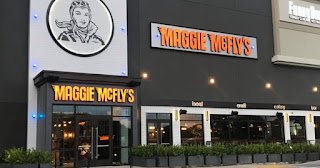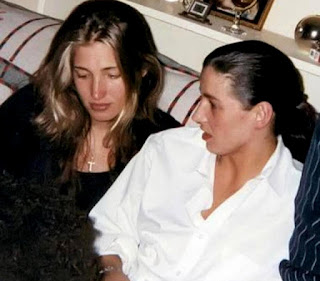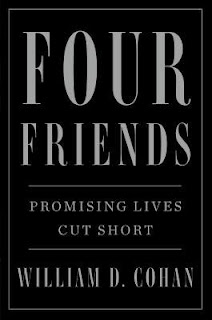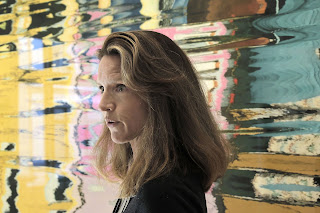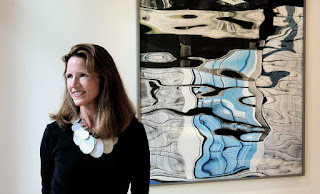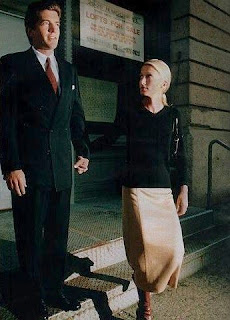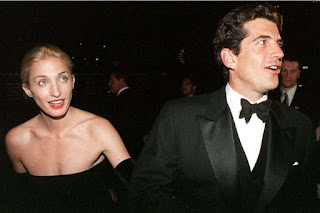During the half century, plus nine years, that have elapsed since Marilyn’s untimely death, the debate concerning the why and how of that tragic event has continued loudly and unabated, almost attaining the ear piercing level of a cacophony. The theories that have attempted to answer all the lingering questions and thereby solve the lingering mystery have become even more bizarre and more sensational while becoming less substantiated. In short, the passing of time has not given rise to a clearer understanding of the facts, just foggier and goofier opinions. The last opportunist release is former LAPD police officer Michael Rothmiller's Bombshell (2021). The case is neither Robert Slatzer nor Jeanne Carmen nor Samir Muqaddin nor the 1982 LADA Summary Report regarding that investigation mentioned Michael Rothmiller. But then, the mythology surrounding Marilyn’s diary, as it relates to her death, is so ingrained in her story and so well known by most of humanity, it is entirely remarkable that more persons have not appeared with odd stories similar to Rothmiller’s. The secret diary mythology has flourished in the unusually fertile firmament of distrust and paranoia; and it has been continuously fertilized by a voyeuristic media and opportunistic individuals adept at manipulating the confusion caused by misinterpretation and misunderstanding, manipulated by those who can invariably grind confusion into monetary benefit. Marilyn’s death is not a complex polynomial nor a mysterious mathematical expression: it only appears to be one due to the overabundance of conflicting and contradictory testimony contained in the numerous pathographies written about her life and what has become her perversely sexualized death. But perhaps the most incredible and startling aspect of Marilyn Monroe is this: despite the horrid tales, despite the defamation, despite her lurid sexualization, she continues to thrive. However, I for one think it’s time for all the muckraking to end, even though, I admit sadly, I know it never will; and undoubtedly, the murder debates will also continue.
Reopening the investigation into the facts surrounding Marilyn's death, in 1982, the Assistant District Attorney at the time, Ronald H. Carroll, and an investigator, Alan B. Tomich, along with several other investigators, reviewed the case files in 1982 between the months of August and December, conducted additional interviews and addressed all the questions raised by various conspiracists. The district attorney’s office then published, in December of 1982, a twenty-nine page summary report, The Death of Marilyn Monroe: Report to the District Attorney, a copy of which I obtained directly from the Los Angeles County District Attorney’s Office. The published LADA report concluded: "Although factual discrepancies exist, the cumulative evidence available to us fails to support any theory of criminal conduct relating to her death. Based on the information available, no further criminal investigation appears required into Miss Monroe’s death."
It is rich indeed that Joyce Carol Oates, who wrote Blonde—one of the most loathsome books ever written about Marilyn Monroe—should object to the proliferation of destructive literary works masquerading as biographies; but Oates’ corruption perfectly represented the horns of my dilemma: should I employ the word biography in relation to the books about Marilyn Monroe written by Ted Jordan, C. David Heymann, Anthony Summers and several others? Most of the books written about Marilyn Monroe are, in fact, pathographies. Blonde is certainly and clearly a case in point; considering the number of books written about Marilyn Monroe, over one-thousand; yet it is difficult to find one that does not have a heavy and undeniable smell of offal. Jay Margolis and Richard Buskin, for example, reported that Ralph Roberts gave Marilyn her regular Saturday massage between 9:00 AM and 10:15 AM, before leaving by the front door. Carl Rollyson cited Ralph Robert’s presence along with Marilyn’s massage; but Rollyson reported that Laurence Schiller did not appear at Fifth Helena until 10:30 AM, a time which completely contradicted Schiller’s memoir. However, Donald Spoto, who interviewed Marilyn’s good friend and masseur, did not mention Ralph’s presence that morning or that alleged massage. Additionally, Gary Vitacco-Robles reported that Schiller arrived sometime before noon and that Marilyn took the photographer on a tour of Fifth Helena during his August the 4th visit.
Gary Vitacco-Robles in Icon, considered by many the best Monroe biography, or at least one of the top three, also failed to mention that Marilyn received an early morning massage. Biographer Michelle Morgan mentioned a Schiller visit in her Marilyn biography; but she did not mention a tour of Fifth Helena. Donald Spoto did not mention a residential tour and neither did Schiller in his written memoir. Marilyn biographer, Randy Taraborrelli, did not mention a visit by Schiller at all. Likewise, the murder theorists Jay Margolis and Richard Buskin also excluded Schiller’s visit from their accounting of August the 4th’s events. I implicitly trust the assiduously researched, two volume Marilyn biography written by Gary Vitacco-Robles. I also trust Donald Spoto’s biography along with the volume published by Michelle Morgan and, to an extent, the one published by Stacy Eubank; on the other hand, I am not as trusting of Randy Taraborrelli or Lawrence Schiller's. On 16th July, according to Heymann, Marilyn attended a celebratory party thrown by the Senior Kennedy at Romanoff’s, a restaurant in Beverly Hills. Heymann alleged that Kennedy and Marilyn were together during that entire Saturday before the future president elect flew back to Boston, departure time not divulged.
On the John F. Kennedy Presidential Library and Museum website, those that are interested can view a video of his twenty-two minute acceptance speech as it was broadcast by CBS television in 1960. Occasionally, the television cameras scan the large crowd, probably searching for attending celebrities, considering the proximity to Hollywood. If Marilyn Monroe was there, arguably the biggest movie star in the world in 1960, the cameras never located her; and I find that strange indeed. Also, there are no contemporaneous media reports that Marilyn attended the Democrat convention in 1960; and that media void leads to obvious and pertinent questions: where was Marilyn and what was she doing during July of that year? She was attending pre-production meetings for filming The Misfits, to begin in late July, Marilyn departed for New York City on June the 25th. She arrived in Manhattan the following day. During the first week in July, Arthur Miller joined Marilyn in New York City where, beginning on the 5th, she performed several screen tests for The Misfits. On July the 13th, the fourth day of the Los Angeles convention, Marilyn located Ralph Roberts playing poker in Maureen Stapleton’s Manhattan apartment. Roberts agreed to give Marilyn a massage. Upon entering the Miller’s apartment, also in Manhattan, Roberts found her watching the Democrat National Convention via her television set as Arthur Miller slept in the couple’s adjoining bedroom. On July the 14th, Thursday, the conventions fifth day, Marilyn sent Ralph Greenson a telegram from Manhattan, accompanied by a bouquet of roses. The telegram noted that she would be in Los Angeles on Sunday evening, July the 17th. According to Donald Spoto, Marilyn attended a therapy session with Dr. Greenson on the 18th of July, and kept an appointment with her internist, Dr. Hyman Engelberg. She departed for Reno, Nevada, by airplane on July the 20th.
The following day, John Huston filmed the first scene of The Misfits in Nevada. Regardless of the actual date Marilyn left New York City, she obviously did not participate in the events and shenanigans as asserted by C. David Heymann. Marilyn was not in Los Angeles during the week of July the 10th and she was not with John Kennedy during the Democratic National Convention in 1960. According to Gary Vitacco-Robles, Marilyn was en-route to Los Angeles on July the 15th; and therefore, she could not have attended John Kennedy’s acceptance speech at the Los Angeles Coliseum nor met him backstage on July the 15th. The lack of credible evidence to support a love affair between actress and attorney general should come as no surprise: Norman Mailer confessed in 1973 that he fundamentally fabricated that romantic link between Marilyn and Robert Kennedy. Besides, Marilyn invariably spoke highly of John Kennedy and his brother. Simply put, it is more than doubtful that she would ever have participated in such a fabled press conference. Neither John Fitzgerald nor Robert Francis Kennedy were involved in Marilyn’s death. Robert Francis did not visit Marilyn along with Peter Lawford on August the 4th in Los Angeles.
Additionally, Pat Newcomb, Peter Lawford, Eunice Murray and Dr. Greenson did not induce Marilyn to commit suicide. Doing that would not have been possible, frankly, once we consider Marilyn’s willfulness. Anthony Summers admitted that Peter Lawford refuted the tales regarding John Kennedy’s affair with Marilyn. The ill and aging English actor termed the allegations thereof nothing but balls; and yet, since Lawford’s repudiation contradicted Summers’ entrenched belief, Summers asserted that the facts suggested otherwise. I am not exactly sure which facts Summers meant. Summers relied on quotations from various witnesses, Deborah Gould, for instance, who was married to Lawford in 1976; but as husband and wife, Peter and Deborah only cohabited for two months. Patricia Seaton informed David Johnston, a vocal critic of Heymann’s frequent use of fabricated and deceased sources, that Lawford could not have been interviewed by Heymann as the author had alleged. According to Patricia, Peter was close to death and hardly able to make coherent statements, much less conduct a lengthy interview. Did Heymann interview the dying actor? More than likely, I here assert, never. According to Patricia Seaton, Heymann invented all the quotations he attributed to her husband; and a considerable amount of what Heymann quoted, what he alleged came directed from Lawford, found its way onto the pages of Marilyn pathographies written thereafter; but the quotation most often mentioned in the same breath as the name Peter Lawford became the title of a BBC television documentary, Say Goodbye to the President, broadcast in October of 1985.
Marilyn Monroe was not a fan of Peter Lawford. Their unique history suggests that Lawford fell romantically for Marilyn at the beginning of her movie career and he pursued her while they were both a part of the local surfing community; but she was simply disinterested. She apparently referred to him as a beach wolf more than once. LAPD interviewed Peter Lawford on 16th October 1974 at 5:00 PM. During that interview, Lawford asserted that Marilyn's last words had been: 'Say goodbye to Pat, say goodbye to Jack and say goodbye to yourself, because you’re a nice guy.' The preceding quotation is not exactly the same as the one reported by Summers and other conspiracists. Moreover, during his LAPD interview, Mr. Lawford also stated that most of what has been written by various authors, such as Robert Slatzer, Anthony Scaduto, Norman Mailer and others regarding the last days in the life of Marilyn Monroe were ‘pure fantasy’. Odd. No conspiracist of which I am aware has ever mentioned or quoted Lawford’s interview with the LAPD. A few conspiracists have alleged that Ralph Greenson and his associates wanted to gain control of Marilyn’s estate and the millions of dollars it would generate after her death; and so they murdered her. Such an orthodoxy, however, has a central flaw: how could those persons have known prior to Marilyn’s death that her estate would generate any income for any entity other than 20th Century-Fox Film Corporation or the photographer, Milton H. Greene? In fact, they could not have known that Marilyn would become, in death, the icon and symbol that she became. —"Murder Orthodoxies: A Non-Conspiracist’s View of Marilyn Monroe’s Death" (2018) by Donald R. McGovern










